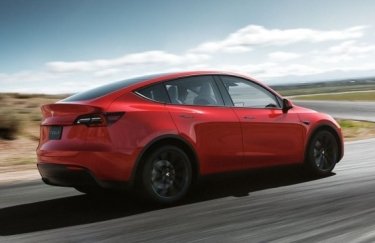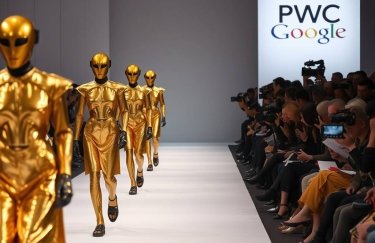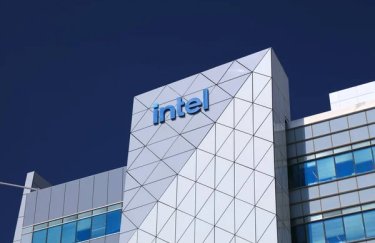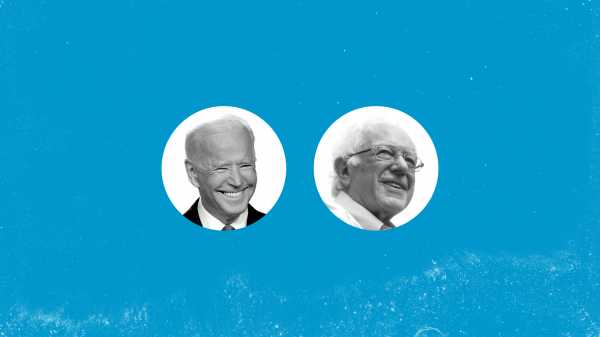
The 2 Democrats running for president and everything else you should know about 2020
The biggest questions about the 2020 Democratic presidential primary, answered.
By
Dylan Scott and Ella Nilsen
Updated
Mar 19, 2020, 1:03pm EDT
Graphics: Zac Freeland/Vox, Photos: Getty Images, Creative Commons
Share this story
-
Share this on Facebook
-
Share this on Twitter
-
Share
All sharing options
Share
All sharing options for:
The 2 Democrats running for president and everything else you should know about 2020
-
Reddit
-
Pocket
-
Flipboard
-
Email
Part of
Vox’s guide to the 2020 presidential candidates
The 2020 Democratic presidential primary election candidates are officially down to former Vice President Joe Biden and Vermont Sen. Bernie Sanders.
Rep. Tulsi Gabbard (D-HI) has announced she is leaving the race, after polling in low single digits for months and winning just two primary delegates. Gabbard has joined a large field of prominent former candidates: In early March, Elizabeth Warren, Mike Bloomberg, Pete Buttigieg, and Amy Klobuchar exited from the race. Sanders showed strength in the early states, and then Biden surged on South Carolina and has outperformed Sanders in most of the March contests. Biden is the clear frontrunner at this point in the primary, having received over 1,100 delegates (he needs 1,991 to win the nomination).
When the 2020 campaign started, any Democrat with dreams of occupying the Oval Office saw Donald Trump as a vulnerable president who hasn’t broadened his appeal beyond his base. A lot of them decided to run for their party’s nomination to be its standard-bearer in the 2020 election.
Two candidates were stronger than the rest: Biden and Sanders, especially after their respective delegate hauls on Super Tuesday. Warren, the Massachusetts senator who rose to join the top of the field but then faded, ended her bid on March 5 and essentially narrowed the field to those final two.
By that point, most candidates had dropped out: Recent exits include Rep. Tulsi Gabbard of Hawaii; Warren, the progressive senator from Massachusetts; Bloomberg, the former New York City mayor; former South Bend, Indiana, Mayor Pete Buttigieg, who won the most delegates in the Iowa caucuses and finished a close second in New Hampshire; and Sen. Klobuchar of Minnesota, who couldn’t parlay a strong third-place finish in New Hampshire into momentum anywhere else. Billionaire activist Tom Steyer also dropped out after the South Carolina contest.
The Democratic field once included a record number of women and nonwhite candidates, a mix of high-wattage stars and lesser-known contenders who believed they could navigate a fractured field to victory. It ends with two 70-something white men. The debates started in June, with most candidates getting a chance to appear, but the stage has repeatedly shrunk since then.
The impact of the coronavirus pandemic is a big question mark hanging over the rest of the nomination process; coronavirus has already forced five states to postpone their primaries, and caused both Biden and Sanders to largely suspend the physical aspects of their campaigns like rallies and in-person field organizing.
Whoever emerges from the Democratic primary will face Trump, who along with the Republican National Committee has already raised more than $300 million for his reelection campaign. Recent history tells us Americans usually give their presidents another four years, which should lend Trump an advantage. But the president has been historically unpopular during his first term, and Biden and Sanders look competitive in a hypothetical general election matchup.
The past few months — and days — have demonstrated that really anything can happen. It’s silly to pretend anybody knows how this contest is going to end, and the 2016 election should have humbled all political prognosticators. Still, the 2020 campaign is well underway. Here is what you need to know to get oriented.
Who is running for president in the 2020 election?
On the Republican side, there is, of course, President Donald Trump.
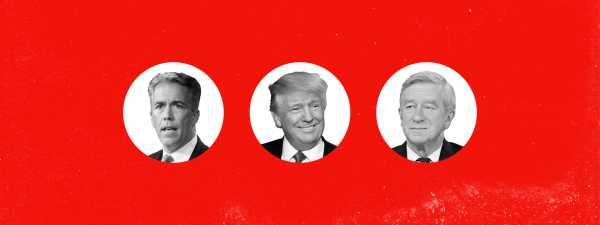
Republican leaders have said they want to protect Trump by having state parties change the rules for their primaries to guard against an insurgency. The GOPer who lasted longest in the race to supplant him was former Massachusetts Gov. Bill Weld, a libertarian-leaning Republican. Weld announced on March 18 he was dropping out of the race.
On the Democratic side, the field is finally down to two.
Former Vice President Joe Biden: Biden thought hard about running in 2016, but he decided against it, being so soon after his son Beau’s death and with the party establishment uniformly behind Hillary Clinton. He’s still very popular with Democratic voters, and the former veep apparently wasn’t sure any of the other potential candidates would beat Trump. Biden had a sizable lead for much of the race in Democratic national polls and had a resurgence around Super Tuesday.
Sen. Bernie Sanders (I-VT): The 2016 runner-up is running again. He has the biggest grassroots base of any potential candidate and has led the push to move the party leftward. A more competitive field has presented Sanders with a very different race this time. The senator had a heart attack while on the campaign trail in late 2019 but has recovered. For many on the Democratic left, Sanders is the only candidate with the credibility to pursue their top-tier issues, like Medicare-for-all.
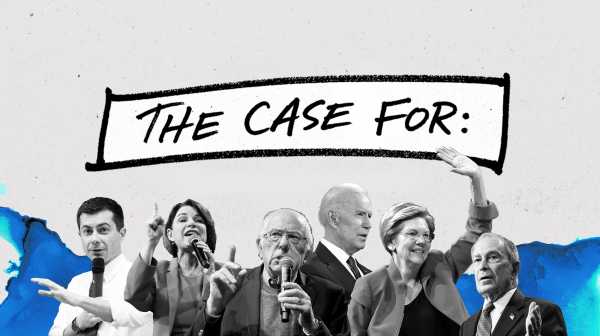
What’s the strongest argument for each leading Democratic candidate? Read all of the entries in our series:
- Bernie Sanders
- Elizabeth Warren
- Joe Biden
- Pete Buttigieg
- Michael Bloomberg
- Amy Klobuchar
Who has dropped out of the 2020 presidential campaign?
Quite a few Democrats have already given up the ghost, with some of the big names withdrawing once they faltered in the primaries.
Rep. Tulsi Gabbard (D-HI): Gabbard fires up a certain strain of antiwar progressive. Throughout the primary, she faced tough questions, though, about her apparent friendliness with Syrian dictator Bashar al-Assad and her past comments on LGBTQ rights. She gained little traction in polls or early primaries, but stuck in the race throughout the March contests — ultimately picking up two delegates.
Sen. Elizabeth Warren (D-MA): The Massachusetts senator is proudly progressive, though she tended to position herself as wanting to fix capitalism rather than replace it. As a candidate, she wanted to outflank Trump on trade, give workers seats on corporate boards, and tax extreme wealth.
Former New York City Mayor Mike Bloomberg: Bloomberg had toyed with a Democratic presidential run, even though he governed the country’s biggest city as an independent for a while. Late in the game, he finally decided to take a shot. He had a few policy wins that he can tout to Democratic voters, most notably on guns. But a centrist billionaire didn’t click with voters when they went to vote.
Former South Bend, Indiana, Mayor Pete Buttigieg: Something of a viral political star, though he led a city of “just” 100,000 people, Buttigieg is a military veteran and a Rhodes scholar, and he would have been the first openly LGBTQ president in American history.
Sen. Amy Klobuchar (D-MN): She tried to blend her folksy, Midwestern manner with some crossover appeal, given her history of working across the aisle with Republicans and winning elections handily in a purplish state.
Tom Steyer: The billionaire Democratic donor first rose to political prominence for his focus on combating climate change, and started a crusade to convince congressional Democrats to impeach Trump.
Sen. Cory Booker (D-NJ): The former Newark, New Jersey, mayor and part-time firefighter was a fresh face with big ideas like savings accounts for newborns, but his work promoting charter schools (not a favorite of the teachers unions) and the perception that he’s close with Wall Street both posed challenges to his candidacy from the start.
Sen. Kamala Harris (D-CA): The former California attorney general started generating White House hype almost as soon as she got to the Senate in 2017. As a younger black woman, she personified the Democratic Party’s changing nature. Harris made a big splash in early polls, but she dropped after stumbles over health care and never recovered.
Andrew Yang: A humanitarian-minded entrepreneur who also served in the Obama administration, he ran on a policy platform that includes, among other things, a universal basic income that would pay out $1,000 a month to every American over 18.
Former Rep. Beto O’Rourke: The former Texas Congress member was once 2020’s biggest wild card. O’Rourke built a historically successful fundraising apparatus during his losing 2018 Senate run against Ted Cruz but couldn’t translate it into a viable presidential bid.
New York City Mayor Bill de Blasio: De Blasio, the mayor of America’s biggest city and already the unlikely victor of a contentious Democratic primary to get there, touted his progressive achievements in the Big Apple as a model for the nation: enacting universal pre-K, ending stop-and-frisk, and creating an ambitious local health care program.
Sen. Kirsten Gillibrand (D-NY): Gillibrand had evolved over the years from a centrist Democrat in the House to a progressive. She was presenting herself as a young mom in tune with the Me Too era and the Democratic women who powered the party to historic wins in the 2018 midterms.
Sen. Michael Bennet (D-CO): Bennet is a well-regarded but nationally little-known senator. He tacks toward the center ideologically, and the passion that fueled his candidacy was a fervent frustration with the way Washington works now.
Former San Antonio mayor and HUD Secretary Julián Castro: Castro got VP buzz in prior elections; this time, he ran his own campaign after serving in Obama’s Cabinet on an aspirational message as the grandson of immigrants.
Former Colorado Gov. John Hickenlooper: Hickenlooper is a moderate ex-governor who pitched his ability to work across the aisle. After dropping out of the presidential race, he decided to run for the Democratic nomination to challenge GOP Sen. Cory Gardner in 2020 instead.
Washington Gov. Jay Inslee: Inslee centered his work on environmental issues and the threat of climate change. He has pushed a bill to get his home state off coal energy and all other carbon-producing energy sources by 2045. He has opted instead to seek a third term as governor.
Rep. Seth Moulton (D-MA): Another Nancy Pelosi skeptic who helped lead the unsuccessful rebellion to stop her from becoming House speaker again in 2016. The Massachusetts representative, who is an Iraq War veteran, positioned himself as a moderate in contrast to the socialist energy animating the left and seeking to take over his party.
Rep. Tim Ryan (D-OH): The Ohio Congress member pitched himself as the Democratic answer for Trump country, arguing he can connect with the blue-collar workers the party has lost in the Midwest.
Former Sen. Mike Gravel: The 88-year-old former senator, famed for reading the Pentagon Papers into the congressional record, ran 2020’s oddest campaign. Two teenagers convinced Gravel to launch a protest candidacy targeting the center left and the forever wars of mainstream American foreign policy. He endorsed Gabbard and Sanders after he exited the race.
Miramar, Florida, Mayor Wayne Messam: The mayor of a Miami suburb, Messam had perhaps the lowest name recognition of any Democrat in the race. The son of Jamaican immigrants, he’s raised wages for city workers as mayor and confronted the Republican-led state government over gun control.
Former Rep. Joe Sestak: The retired three-star admiral and former Pennsylvania representative in Congress was a late entry to the race, announcing his campaign three days before the first Democratic debates. Sestak pitched himself heavily on his naval experience — his campaign logo prominently features the moniker “Adm. Joe” — and the global leadership experience he says it provides.
Marianne Williamson: A self-proclaimed “bitch for God” who has been a spiritual adviser to Oprah. Her previous political experience was a failed run for Congress as an independent in 2014.
Former Rep. John Delaney: The most notable thing about Delaney was he ran for president for more than two years, more or less living in Iowa, the first state on the presidential calendar. But he rarely polled above 1 percent there or anywhere else.
Former Massachusetts Gov. Deval Patrick: Patrick had sworn off a presidential bid initially, but he reversed course and jumped into the campaign in November 2019. He never made a mark.
When are the next 2020 Democratic presidential primary election debates?
The Democratic National Committee announced it would hold 12 debates, starting in June 2019 and extending into 2020.
The 11th debate of the Democratic primary was held on March 15 in Washington DC; the location was switched from Arizona and held without an audience to reduce the risk of coronavirus transmission. No future debates have been announced yet.
When are the 2020 Democratic presidential primary election and caucus nights?
Early momentum is always critical, especially in a big field with so many candidates trying to prove that they’re viable. With that in mind, here are the next two months of the Democratic primary schedule. Five states have postponed the dates of their contests due to coronavirus concerns: Ohio, Georgia, Maryland, Kentucky, and Louisiana.
- March 29: Puerto Rico
- April 4: Alaska, Hawaii, Wyoming
- April 7: Wisconsin
- April 28: Connecticut, Delaware, New York, Pennsylvania, and Rhode Island
How do you win the 2020 Democratic presidential nomination?
The short version is you have to win a majority of the delegates.
Every state has different rules for its primary elections or caucuses in terms of allocating delegates. Candidates win delegates proportional to where they finish in the results, though they generally have to hit a minimum threshold of 15 percent to be awarded any delegates.
There will be an estimated 3,979 delegates for the 2020 Democratic National Convention (where the nominee will be formally selected) up for grabs during the primary elections. One candidate needs to win at least 1,991 delegates to be nominated.
You might hear talk of a “brokered” or “contested” convention if no candidate gets the necessary delegates to win on the first ballot. That currently seems very unlikely. The FiveThirtyEight forecast, as of March 19, projects that there’s a one-in-100 chance of no candidate getting a majority of votes (which also doesn’t necessarily mean a contested convention). There hasn’t been a brokered convention in decades.
Democrats have made one major change from the 2016 primary on “superdelegates” — elected officials, party leaders, and other prominent Democrats who have votes in addition to the regular delegates awarded by state elections. In the past, superdelegates didn’t have to follow any rules and could back whichever candidate they desire and make up their minds at any point in the process. When most of them endorsed Hillary Clinton in 2016, it gave her a built-in delegate advantage over Bernie Sanders, though she still won enough votes independent of the superdelegates to secure the nomination.
In a series of reforms, the DNC has stripped superdelegates of a vote on the first ballot. So unless the convention has to move to second or third votes because no candidate has a sufficient number of delegates — something that hasn’t happened since the 1950s — superdelegates won’t matter in 2020. (Arguably, they never did. Many pointed out it was unlikely for superdelegates to use their power to overturn the outcome of the primary system, but it nevertheless created consternation within the party.)
Okay. So who will be the next president?
Ha! You almost got me.
Sourse: vox.com
